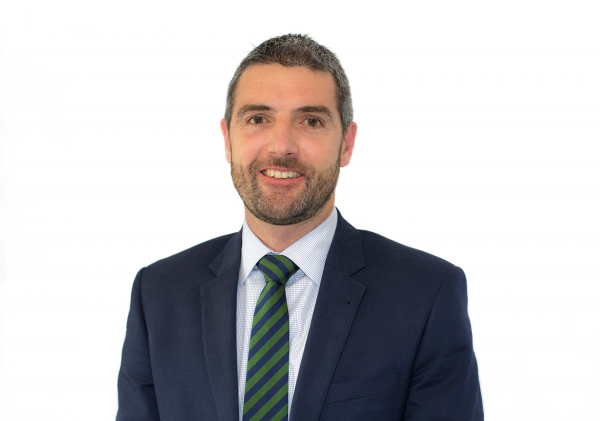
Stephen Hundy from Worrells, Canberra.
So far, I’ve focused on celebrating businesses in this series, as their owners are truly bucking the trends. But what if your business is not only not bucking the trends, but even sliding down a slippery slide to oblivion and financial ruin. What if you are so far from bucking the trends that you are desperate? What are your options? I’ve found a man who knows the answers.
Let’s take a bird’s eye view of the financial landscape through the lens of a specialist and expert in the insolvency business, Stephen Hundy from Worrells, Canberra.
Stephen has been in the insolvency industry for over 20 years. On completing his commerce degree through the ANU, he was immediately given the opportunity to work for Ferrier Hodgson, way back in 1995.
After several years of working for a variety of companies in Sydney and overseas, Stephen decided he wanted to return to Canberra in 2003. Having gained further experience in the industry, he looked around for a firm with a strong reputation and with whom he could open a branch here. He chose Worrells, and six years ago the Canberra Office opened. It’s a lean team of five people, but as Stephen is quick to point out, Worrells, in Canberra is nationally resourced, but locally focused, which gives them the edge and the best of both worlds. They only specialise in insolvency and forensic accounting, unlike other firms who deal with more.
An interview with Stephen sheds light on much of the ‘valley of death’ or ‘near-death experiences’ of the financial kind, in the commercial scene in Canberra. I am intrigued, and so too, I suspect, might other business owners.
Stephen has interesting stories to tell.
“Over the last 20 years, I have dealt with people from all walks of life. I have been involved in matters involving tradesmen and public servants, and some who most would think are unlikely to find themselves in financial difficulties such as solicitors and dentists. Unfortunately, some do not learn from their mistakes. One plumber who went bankrupt entered into an agreement to repay his creditors and got out of bankruptcy. He defaulted on his repayments, however, and he ended up bankrupt again. When we looked at why he was unable to make the repayments we found that he had the funds available but had bought an off-road 4wd vehicle instead.”
and this…
“The insolvency industry is not all doom and gloom, and there are opportunities to provide valuable advice. One of the more interesting matters was a few years back when I undertook a financial viability review for a government department to look at whether there were viable businesses that could be created from the estimated 1 million feral camels roaming in central Australia. I travelled to the Northern Territory and spent a week with different indigenous communities, including one on the NT and Western Australian border, speaking to people and looking at possibilities for the sale and export of camel meat and related products.”
In explaining his industry, however, Stephen likes to talk in binaries. There are two categories of insolvencies: the ones who are trying to do the right thing but have poor financial management and a distinct lack of business acumen, finding themselves insolvent; the second category is what he so eloquently terms as the “rogues” in the game. The rogues are not trying to do the right thing, often evasive and difficult to track down. They hide their assets.
Continuing with the binaries, there are two types of insolvencies, the voluntary appointments (where people come to Worrells to find out what their options are), and the court appointed involuntary appointments. With the sad cases, where there are those who are trying to do the right thing, the staff at Worrells make sure that it doesn’t have to be any more difficult than it is already. Of course, they are bound by legislation, so all work will still need to comply. Some of these cases are not only sad but often complicated, where couples are involved in messy divorces.
On the other hand, Stephen loves the investigative nature of the forensic cases, where he must trace financial assets and recover as much as possible. The variety of work here is a plus for him. One moment, he will be dealing sensitively with the poor souls who have come to grief through simple mismanagement, and the next, the phone will ring on a new court-appointed assignment.
I asked Stephen about the signs of trouble, and he says yes, there are definite signs, but unfortunately, people often come too late. If they do come early enough, Worrells have managed to turn some around. The warning signs he mentions are: tax debts to the ATO; unpaid superannuation; suppliers demanding COD; and receiving demands for payment via court documents, etc. All telltale signs of trading whilst being insolvent. Often, it’s just too late to save the business. There is also a “liquidity ratio” measure, which is to do with current assets over current liabilities and apparently, a ratio of less than one is the indicator here.
Asked about the trends in the past 20 years in the industry, there have been significant changes. Banks are working more closely with clients today, resulting in fewer receiverships on the corporate side. But there are also increases in phoenix activities – those companies that leave debt and creditors behind, form a new company, transferring their assets so that they can start from scratch again. The government is being more proactive in this space though, apparently.
I remember that there was much fanfare when Malcolm Turnbull announced the innovation package, which suggested it should be easier for entrepreneurs to “fail fast” and there was the talk of reducing the period of bankruptcy from three years to one year, but nothing has come of that as yet. It will be interesting to see if anything does.
So, rogues and the innocent, ignorant. Both sides of the coin and a plethora of stories and circumstances woven around the binaries of the insolvency landscape. Certainly, there is enough excitement to keep Stephen fully engaged and enjoying the work he does, which to most of us would not be such an attractive proposition at all.
So there you have it – the commercial landscape where some businesses are failing and stopping well short of bucking the trends – dramatically!
In many ways, Stephen is also bucking the trends with the work he does and the opportunities he has created through imagination and entrepreneurship. But he tells me (funnily enough), that he is “a cautious man who doesn’t take risks” – which he admits is not always a good thing in business.
But who can blame him!














